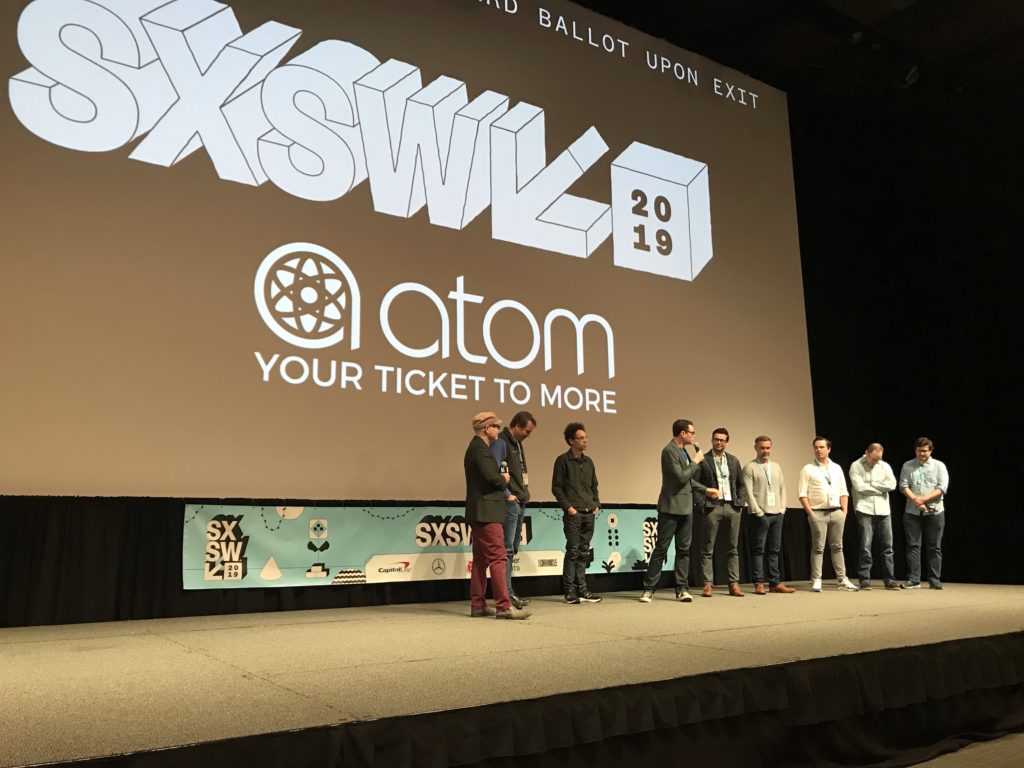
By LAURA LOREK, Publisher of Silicon Hills News
Self-driving cars are the future, but there is still some uncertainty on how long it will take to get there and what that future looks like.
That’s the conclusion from a panel discussion at South by Southwest Saturday morning. Hundreds of people showed up for the 9:30 a.m. session on Self-Driving Cars: The Future is When? Featuring Chris Urmson, CEO of Aurora Innovation and Malcolm Gladwell, author and host of the Revisionist History podcast. NBC News Correspondent Jo Ling Kent moderated the discussion.
The talk took place before the premiere of the documentary film “Autonomy,” inspired by a special edition of Car and Driver Magazine on autonomous vehicles. The film features Gladwell and Urmson and explores the history and evolution of self-driving cars. It also focuses on the impact of those cars on car aficionados who prefer “analog” vehicles that they can take apart and control. The documentary screening took place at the Atom Theatre at the Austin Convention Center following the talk.
Gladwell, who drives a Blue 2003 BMW M5, isn’t thrilled with the idea of self-driving cars replacing individually owned ones. He’s not ready to hand over his steering wheel to a robot.
“I’m not sure I am excited,” Gladwell said. “Do I want it? No, I actually really like driving.”
Urmson, who is already testing self-driving cars on public roads, drives an Audi Cabriolet. He loves driving down Interstate 280 in Northern California. But then he gets into gridlock traffic in San Francisco and he concludes, “this is why we need self-driving cars.”
Self-driving cars are being tested today, but they are not widely available in the United States. However, a lot of today’s cars have different levels of autonomous technology built in like automatic braking and sensors that warn about obstacles.
The benefits of self-driving cars are that they handle the mundane parts of driving, especially in urban environments, Urmson said.
“An awful lot of people don’t enjoy driving like you do,” Urmson told Gladwell. “The vast majority of people don’t enjoy driving, they don’t like commuting.”
The technology is inevitable, Gladwell said. He doesn’t think self-driving cars and cars driven by humans can co-exist and that eventually, the entire world will become one of
Gladwell is worried that people who like to drive, like himself, are going to get dealt out of the driving equation and will no longer have that option.
The system would be dramatically better if it were solely based on driverless cars, Urmson said.
“But I don’t think that’s real,” he said. “There are people who love driving.”
There is no reason to worry about self-driving cars
“I think there are parts of driving that make a ton of sense to have self-driving cars serve,” Urmson said. For example, self-driving cars can help people move through urban centers more efficiently. Today, 30 percent of the traffic moving through San Francisco is people looking for parking, Urmson said.
In Paris, 80 percent of the people driving are looking for parking, Urmson said.
With self-driving cars, people don’t have to park. The cars just drop them off at their location and go on to look for another passenger. There will no longer be a need for parking garages, Urmson said.
Gladwell said that makes the situation even worse because people will no longer own cars. They will essentially be taking taxis everywhere. Cars will become mass transit.
If people have self-owned self-driving cars, the traffic will increase dramatically, Gladwell said. Uber has increased traffic in Manhattan because people don’t take mass transit, they hop in an Uber, he said.
Self-driving cars are inevitable in cities, Urmson said.
“It’s not sustainable to have one person in a two-ton vehicle driving down the road,” Urmson said. “It doesn’t mean you don’t get to enjoy your car.”
Driving might be restricted in urban areas and people might be allowed to drive on the weekend in rural settings, Urmson said.
The promise of the self-driving technology is to have vehicles that are safer than human drivers, Urmson said. About 37,000 people die from traffic accidents in the United States every year and 95 percent of those accidents occur because of human error. Self-driving cars would make it safer to commute and save lives, Urmson said.
Already, the airline industry has adopted auto-pilot plane technology and that has helped reduce collisions and crashes, Gladwell said. With autos, there will be far fewer traditional accidents. But self-driving car technology opens the door to someone hacking into the system and causing a major car accident, Gladwell said.
He said he feels like people in Silicon Valley are “a little too blasé about security features” when it comes to self-driving cars. Because the technology is introducing multiple points of vulnerability into the system, Gladwell said.
Cybersecurity is highly important, Urmson said.
“But it is not a self-driving car problem, it’s a connected world problem that we have to solve,” Urmson said.
“Silicon Valley can poo-poo some of the risks in favor of the technology,” Urmson said.
Gladwell said that was a grand understatement.
It’s really a fleet inoculation problem and engineers must think about cybersecurity, but this is a fundamental societal problem, not just a self-driving car problem, Urmson said.
Cybersecurity is a huge unanswered problem in the movement to the Internet of Things, Gladwell said.
It’s just not encouraging to be launching a massive revolution when Cybersecurity is still unsolved, Gladwell said.
The one part of self-driving vehicle technology that doesn’t bother Gladwell is the jobs. He doesn’t think it will lead to massive unemployment of truck drivers. Self-driving vehicles is going to change the nature of the work and create a whole lot of new jobs, he said.
“There still has to be a person in the truck,” Gladwell said. “ There has to be a person that helps to unload the truck once it gets to where it’s going.”

